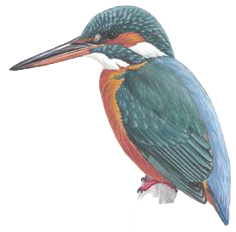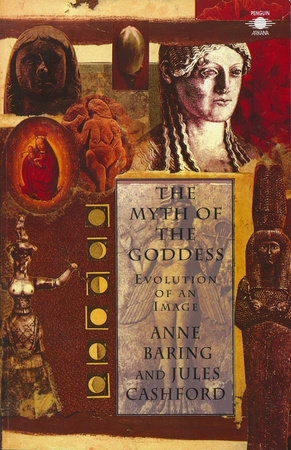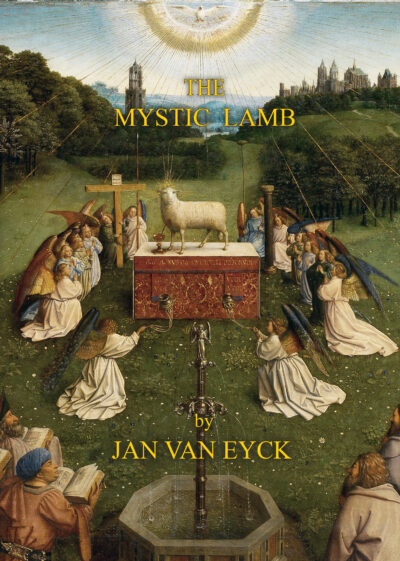Description
The Moon: Symbol of Transformation
Jules Cashford
FOREWORD
I thought that whatever of philosophy has been made poetry is alone permanent…
Yeats. The Philosophy of Shelley’s Poetry
This book explores the myths, symbols and poetic images inspired by the Moon, from the earliest Paleolithic markings on horn and bone, down to the crafted poems of the present. As a study in the history of ideas, the aim is firstly to discover the ways in which stories of the Moon have contributed to the way we think.
The evidence of stories and images from around the world suggests that most, if not all, ancient cultures passed through a stage of interpreting certain aspects of their reality through the Moon. Indeed, the extraordinary and far-reaching powers attributed to the Moon – powers over birth, fecundity, growth, destiny, death and rebirth – amount almost to a world view at the beginning of human history. From a broad perspective, the Moon was just one among many expressions of the culture of the Great Mother Goddess, in which Earth and Moon were understood as one manifestation in dual aspect. But a closer look suggests that the peculiar character of the Moon offered an imaginative scope of its own, both crystallizing the essence of the Goddess myth, and, through the provocative metaphor of the Moon’s cycle and phase, exploring ways of thinking about permanence, time and mortality.
The essential myth of the Moon is the myth of transformation. Early people perceived the Moon’s waxing and waning as the growing and dying of a celestial being, whose death was followed by its own resurrection as the New Moon. The perpetual drama of the Moon’s phases became a model for contemplating a pattern in human, animal and vegetable life, including the idea of life beyond death. It seems that the Moon carried the image of eternity for early people, as well as the image of time. The instinctive identification of the people with their Moon meant that they interpreted the Moon’s rebirth as offering a similar promise for human beings in their own waning and death. The Moon then became a visible symbol of hope, the light that shone in the darkness of the human psyche.
* * *
The earliest notations made by human beings in the Paleolithic age appear to be a record of the lunar cycle, enabling us to measure periods of time longer than 24 hours, which could be reckoned by the Sun. In the Indo-European languages, words for Moon and measurement have the same etymological root, one which extends into an extraordinary range of words for mind, from memory to mania. Further, the coincidence of the timing of the lunar cycle with the female menstrual cycle suggested a relation between the Moon and the cyclical rhythms of human life, and that relationship entered many dimensions of human experience, particularly those concerned with birth, growth and death.
Many of the myths imply a further idea: that the Moon is reborn out of its own substance, and so is itself the god or goddess of birth and rebirth. The crescent of the Moon was widely believed to be a cup which held the waters of life, both the ambrosial nectar of immortal life, out of which the Moon renewed itself, and the life-giving waters that fell to Earth as dew and rain, or spread across the Earth as seas whose tides waxed and waned to the rhythms of the Moon.
As the giver of birth, the Moon became in many lands guardian of the fertility of humans, animals and plants. Even in the early part of the 20th century, babies were held up to the Moon in places as far apart as India and France, and women would drink water saturated with moonlight in order to conceive. Once the ‘powers’ of the Moon were asssumed, connections were made between all the phenomena the Moon was thought to influence. Astonishing patterns of correspondence emerge in the symbolism between otherwise disparate things: between, say, bulls, boars and crescents (the horned Moon), black cats and witches (dark Moon), serpents and souls (shedding their skins as the Moon its shadow), spiders and rain (through the spinning lunar Fates); between toads and childbirth (toad-rain-moisture), between hares and death (the hare seen in the face of the Full Moon who dies), and hares who lay the egg of new life (hare-Moon-rebirth), as in modern European folk customs at Easter. Because of this ancient web of associations, the symbolism of the Moon offers a fascinating insight into the symbolic mind.
Each particular phase of the Moon was once widely felt to give a unique and living quality to time. The waxing phase was for growing and the waning for declining. New and Full Moons were for celebration, but Full Moons were dangerous for ‘lunatics’. The waning and Dark Moon were for withdrawing, planting root vegetables, cutting wood. The three days of death followed by rebirth is a symbol in many of the world’s myths, from the Sumerian Inanna’s descent into the Nether World, the Biblical Jonah and the whale, to Christ’s Descent into Hell. From African Bushman tales to the Egyptian Mysteries of Osiris and the Eleusinian Mysteries of Greece, the idea of resurrection was found reflected in the Moon’s ever-recurring cycle, its eternal return.
* * *
Beginning with the discovery of agriculture, and certainly by the late Bronze and early Iron Age (c. 2000–1250 BC), there was in most parts of the world a change from a purely lunar to a luni-solar calendar, and eventually a reallocation of religious priority from the Moon to the Sun. In a process known as ‘solarization,’ the Sun officially replaced the Moon in many lands, and many of the Moon’s powers and stories were transferred to the Sun, or lost from view. This process, generally speaking, coincided in the west with the rise of the patriarchal cultures over the earlier cultures of the Goddess, when, in a similar way, the stories of the Goddess were obscured or distorted by the dominant mythological perspective. Recovery of all these stories would seem to be essential if we are not to lose the dynamic impulse and original complexity of our ancient inheritance.
* * *
But, perhaps more importantly, the book also asks what these myths and images disclose about human consciousness. This last question may be timely, now that we can stand imaginatively upon the Moon and look back on the Earth, seeing ourselves looking at the Moon. For this is a precise image of the new kind of consciousness which is made possible by achieving a standpoint beyond Earth, allowing us for the first time to see the Earth as a whole. From this magnificent perspective, tribal boundaries, with their warring gods, dissolve into absurdity, even as the smoke of their conflict floats in the air, hovering over regions too small to name, desperate territories on invisible maps.
The other major discovery of the 20th century also made it impossible to think of continents and countries in isolation from each other. As Einstein warned in 1964, ‘The unleashing of the power of the atom bomb has changed everything except our mode of thinking, and thus we head toward unparalleled catastrophes.’ (1) He was surely signalling that the brilliant experiment in consciousness of the last four thousand years had reached its peak and must now sacrifice its autonomy, if it is not to destroy what it has made.
The great mythologist, Joseph Campbell, has given voice to a vision born of this realization:
The old gods are dead or dying and people everywhere are searching, asking: What is the new mythology to be, the mythology of this unified earth as of one harmonious being? (2)
The scientific exploration of human consciousness is relatively recent (in contrast to art, which has always held ‘as ‘twere, the mirror up to nature.’). (3) It began, interestingly enough, around the time that Einstein was speaking, as though the new and necessary focus for the analytic mind was now to be the subject in which that mind inhered. It soon became clear that we understood very little of the way in which a mode of consciousness might change (inevitably inhabiting any paradigm from within). We do not know how mythologies come to be, either new or old, whether they arise spontaneously from the unconscious or whether we can consciously assist new ways of seeing and valuing life to emerge. But by comparing myths from different cultures and times, we have learned that myths make visible to us our deepest longings and imaginings, and so offer one way in which we can apprehend and know our own being.
Since the Age of Enlightenment, it has been a common assumption that the way of thinking about life mythologically belongs to the distant past, such that the speculative thought of modern science and philosophy owes nothing to the ‘irrational’ intuitions of mythology, and, indeed, is founded on a heroic refusal of them. But, since the work of Jung, Cassirer, Frankfort, Eliade and Barfield, among many others, (4) it has become apparent that speculative thought is an inherent feature of mythical thinking, and, conversely, that mythic images are never absent from any attempt to understand the universe, however rational and empirical it would aspire to be. In this case, there might be something to be learned from the way early people related to the universe.
Before philosophy, and later science, became separate disciplines of their own, the poetic images of myth were the central way in which people addressed the immediate contingencies of daily life, and also thought through the unanswerable questions of life and death. This was speculative thought in that it transcended experience in order to explain and unify experience. Like later thinking, predicated on clear definition and explicit statement, these early modes of thought began with a hypothesis. It may have been a living presence – a goddess or a god; it may have taken the form of an animal or bird, or manifested as Moon, Sun or Earth – but it was no less an attempt to reach for an idea that would reveal patterns and structures and make sense of the world. In this sense myth is not a way of thinking superseded by reflective thought; it is the original and living impulse of philosophy.
Early speculations found their way through an imaginative sympathy, which included the entire relationship of people to their world. And – since this was a mutual process – this sympathy included the way the world related to human beings. For the world of early people was a Thou, not an It, a presence both numinous and personal, and so a Subject in the dialectic of thinking, not an inanimate object of thought. What we now call Nature (and forget that the name, and the idea, is a relatively late abstraction) was once not distinguished from humankind: as equally living beings, they belonged to the same continuum of feeling, and did not, therefore, have to be apprehended by different modes of cognition. There was no dichotomy between them. We have always to remember that the ancient imagination was concrete, embedded in and rising out of deeply lived experience, similar, in this respect, to poetry of all ages. It was not that early people did not think philosophically; it was that ‘the good,’ ‘the true’ and ‘the beautiful’ were once good, true and beautiful things, and these ‘things’ were personalities, activities, cosmic events – all that composes a world of value.
This does not mean that people of long ago imparted human characteristics to an alien universe, personifying it in order to feel more at home in it. Such an interpretation rests on an implicit opposition between Nature and humanity, which western modes of thinking now take for granted but is the very assumption that is up for discussion, possibly the central belief that prevents a change in our world view. So it is not just that early people did not have a category for inanimate phenomena; it is also that this category itself may be provisional and not absolute, a function of a particular stage in the evolution of consciousness, but not universal and necessary. How would we know if we did not call it into question? The point is that in changing a mode of consciousness, all assumptions have to be questioned, and particularly those that the dominant mode of consciousness holds to be self-evident, not least because they have contributed to its position of dominance.
One of the discoveries of Psychology in the last century has been to show us that myths structure our thinking whether we are aware of them or not. We all, as a race, culture, or individual, have a story about the world in which we live and about our place and purpose in it. A myth, in its original Greek meaning – muthos – is simply that: a story, one which seeks to render life transparent to an intelligible source. It can be conscious, open to dialogue with other stories, and self-reflective, or it can be unconscious, or less-than-fully conscious, when it is more likely to be understood as literally true and unsusceptible to criticism, usually because it is felt to be vindicated by the Higher Authority who revealed it. What the stories have in common is that they are all constructions of the human psyche. They have to be, because the world is not given as fact but inhabited through interpretation.
The literary critic, Northrop Frye, starts from the premiss that we all live within a ‘mythological universe, a body of assumptions and beliefs developed from our existential concerns,’ which are so much a part of the way in which we see life that we do not notice them. He then introduces the startling term ‘mythological conditioning’ to point to how even the most apparently open-minded stories about the world may be partly unconscious, presenting themselves as simple facts validated by perceptions open to all. (5) It is only the existence of contrary stories that may alert us to the partiality of our own, and so to the inevitable partiality of any story. Our imaginations may recognize elements of our myths, or mode of consciousness, when we see them in dreams, or in art and literature, but we may not fully understand the significance of what we see. It would seem that a change of consciousness is not possible without some awareness of our mythological conditioning.
As we all know, it is very difficult to see through family conditioning in individual life, let alone social conditioning in the collective life of the tribe, or the mythological conditioning of the race in the actual time in which we live. The hope for a study of the myths of the Moon is that because we do not ‘believe in’ the Moon in the way that the Moon was once believed in, we may be able to see something of how ‘mythological conditioning’ might work. We may get a glimpse of how the human mind thinks when it creates conceptions of reality which it then believes to be true and from which it derives, and defends, its conduct. As myths of long ago, images and stories of the Moon can appear to us now as art, open to scrutiny and debate, while their form – the human search for meaning and intelligibility – may mirror the philosophies of any age.
This book tries to tell the story of the myths of the Moon as a story of human consciousness. Lunar images and rituals still persist in many fields of thought, from religious symbolism, fairy tale and folklore to superstition and unexamined habits of mind, yet their source in the Moonlore of earlier times is not always apparent. The idea would be that if we can trace a custom back to its lunar source, which would be tracing a now secular event back to its sacred original, we might gain a perspective on how we have come to think in some of the ways we do.


















Reviews
There are no reviews yet.